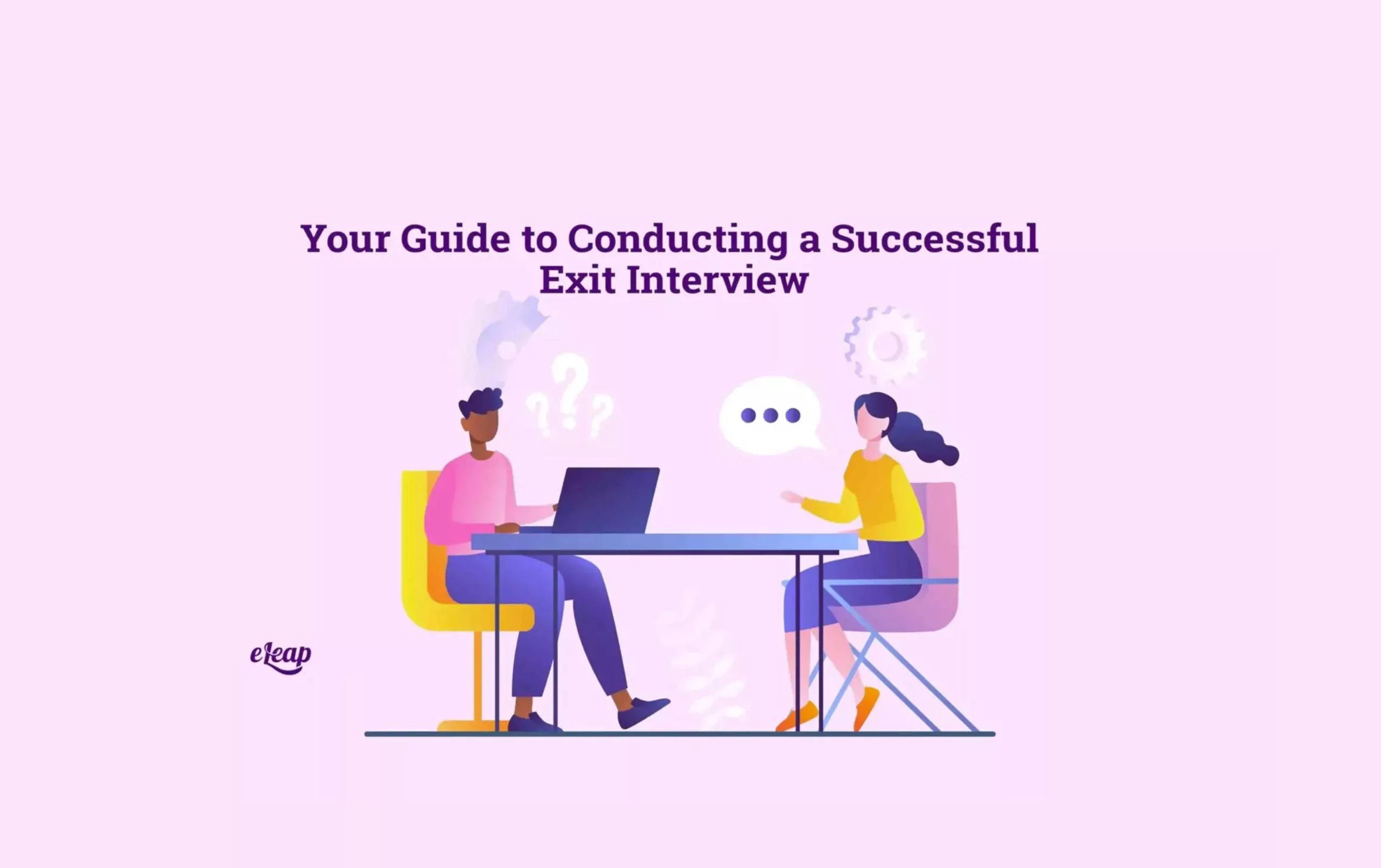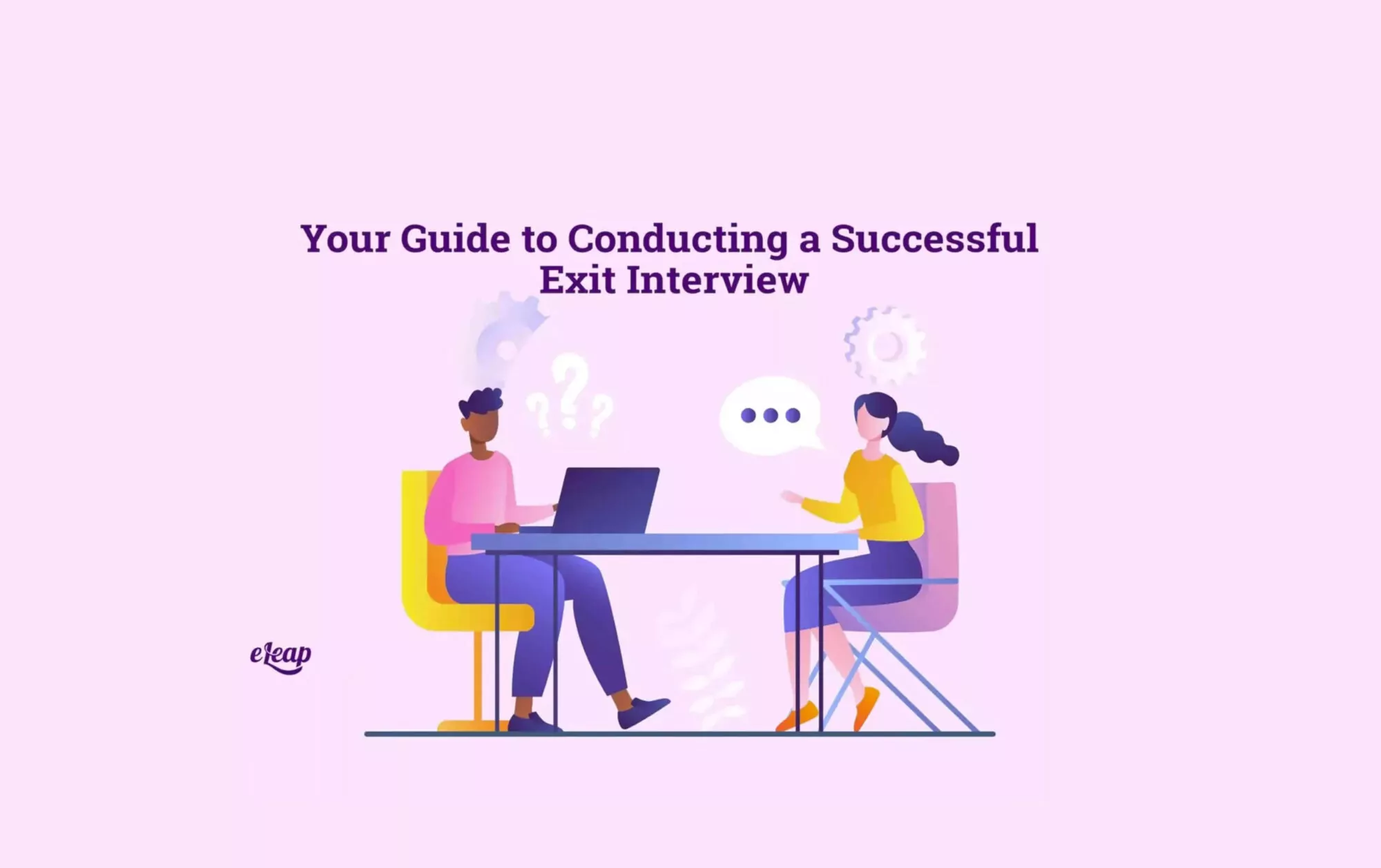Your Guide to Conducting a Successful Exit Interview

Conducting an exit interview can be challenging. However, you must make the most of this opportunity to learn more about your organization, the team that runs it, your culture, and other factors. Departing employees can clue you in on these things and so much more.

Why Is an Exit Interview Important?
When an employee decides to leave your organization, it’s an indication of several things. You now have an open position to fill. However, it is also an opportunity to dig into things, surface critical insights, and glean the information necessary to make vital changes. A good exit interview lays the groundwork to:
- Obtain open, honest feedback not available in any other way
- Improve company culture
- Improve communication across the organization
- Improve employee retention
- Improve the overall employee experience
The Point of Your Exit Interview
When an employee leaves the organization, there’s a reason for it. Maybe they’ve found a position that offers them more money, but chances are good it’s not entirely about financial compensation. It could be that your organization’s culture leaves something to be desired, that your managers micromanage employees, that your CEO makes it difficult to complete projects on time, or that leadership is fragmented, and the company feels rudderless.
By conducting an exit interview, you gain access to this critical information and can then use it to make important changes. However, it’s also vital that the interview be handled in the right way. It should take the form of a free-flowing conversation, not a fill-in-the-blank form or an essay. It should also be conducted face-to-face (even if that means doing so through digital technology) with an HR professional, and not with a leader/manager to whom the employee once answered.
So, how do you go about conducting an exit interview correctly? Let’s break everything down for you below. Getting it right the first time is essential, so we’ll provide the framework and details you need for success.
Conducting an Exit Interview: A Step-By-Step Guide
You’ll have several goals during the exit interview. Gleaning important information is perhaps the most obvious, but you must also make the employee comfortable. They must feel free to share information that might cast leaders in a negative light. You’ll need to stay present and attentive, while also ensuring that the departing employee is comfortable enough to share this important information.
1. Plan the Process
The first step in conducting a successful exit interview is to know who’ll handle each part of the process. The formal interview should be conducted by a member of the HR team, certainly, but they do not have to be the only ones involved. Avoid relying on immediate supervisors or managers, though, because the truth is that most people leave jobs because of poor management. The employee is unlikely to share information with their direct supervisor because they usually figure prominently in the individual’s decision to leave.
Does that mean that the manager has no role? Not at all. Good managers are servants of their teams and to serve their team members, they need to know where they’re falling short. Encourage the manager and employee to sit down for at least a casual chat before the employee leaves for good.
2. Help the Employee Prepare
It’s also important that the employee is prepared for the exit interview. Simply knowing that they will have to go through one is not sufficient. In the employee’s mind, an exit interview could be anything from a brief handshake and friendly farewell to a full debriefing. You need to take a moment and put their mind at ease about the process while also ensuring that they’re ready to provide the information that you need.
One way to do that is with an exit survey. Employees can complete the survey before going through the full interview, which will accomplish a couple of goals. First, completing the survey may help the employee codify their feelings and summarize their reasons for leaving more articulately. Second, the survey may provide you with insight into other areas and can be combined with verbal answers to questions during the interview itself to expand the insight that you glean here.
Exit surveys also get around the problem of employees being reticent about sharing direct feedback. They may fear that what they share might be held against them either immediately or sometime in the future. They may fear that they are not being politically correct, or that their feedback might harm someone’s career.
The problem is that organizations can only grow when provided with this type of direct feedback – the type of sharing that an employee might do with a family member or friend outside the workplace. Exit interviews offer the means to communicate to the employee that their responses will be completely confidential, giving them the confidence to share that direct feedback.
Make sure that you structure your surveys correctly, as well. You should certainly ask why the employee is leaving but understand that most people quit jobs for a combination of reasons. Ask about their second and third reasons for moving on and you’ll surface even more information that can be used to transform the workplace and make vital improvements.
3. Know the Employee
Departing employees are not obligated to complete an exit interview. They are autonomous and control their own time. It’s important for the HR professional conducting the exit interview to understand this and be courteous. One way to do that is to make sure you’re familiar with the employee’s history, achievements, and challenges. The exit interview should feel personal and connected, not cold and distant.
Don’t just hit the high points, either. Here’s a quick list of what the interviewer should know about the departing employee:
- When they joined the company
- Their initial position in the company
- Their career path with the company
- Their biggest achievements with the company
- Hurdles the employee encountered, such as department turnover or being passed over for a promotion
The goal is to get to know the person, celebrate their achievements, and understand some of the reasons that contributed to them deciding to move on.
4. Practice Active Listening
The interviewer needs to have a list of questions to ask. However, there’s more to the process than just recording an employee’s answers to those questions. The best interviewers are good listeners, and that means listening to answers and then digging deeper. Remember that this process is about the employee, not the company, and certainly not about the interviewer.
What’s involved in active listening? If your idea of giving an interview is looking down at your clipboard while writing answers, then you’ll want to check out the list below.
- Practice good body language – be open, make eye contact, and smile. Keep your arms loose and don’t cross them.
- Give the employee a direct invitation to share and make sure they feel appreciated and that you’re invested in the conversation.
- Make it clear that you’re giving the employee the chance to share and be heard.
- Interact with the employee throughout the interview by asking follow-up questions, asking for clarification, and more. Be engaged and involved in the conversation.
5. Make Sure You Have the Right Questions
Finally, we need to touch on the questions that you’ll be asking during the interview. These should be carefully constructed so that they empower the employee while providing you with access to critical information. Open the interview with direct conversation and put the employee at ease before jumping into the question portion, but make sure that your questions are up to par. Here are a few examples to help:
- Do you feel that your manager provided all the tools required for success? If not, why not?
- Do you feel that you were recognized for your achievements?
- Do you feel you had ample opportunities for growth and development?
- Do you feel that your job description and job responsibilities matched?
- Do you feel that your position changed over time with us?
- Do you feel that the compensation you were offered was fair and commensurate with your duties?
- Did you feel that the benefits package you received was fair and covered your needs?
- Do you feel that your manager supported you in all things? Did they provide you with guidance and training or secure it for you if necessary?
- Do you have any recommendations for a replacement to fill your position with us from amongst your coworkers?
- Do you know of any other employees who are unsatisfied with their positions and/or are planning to leave?
Bring It All Together
Promise that you’ll keep the employee’s information confidential, but then put it to use. After all, there’s no point in conducting an exit interview if you’re unwilling or unable to act on the information you gain. Use the information you unearth during these interviews to make needed changes, which can include upgrading your compensation and benefits packages, weeding out bad managers, streamlining processes, rewriting job descriptions, and more.
When handled correctly, an exit interview can be a powerful tool for organization development. Make sure you use them appropriately.